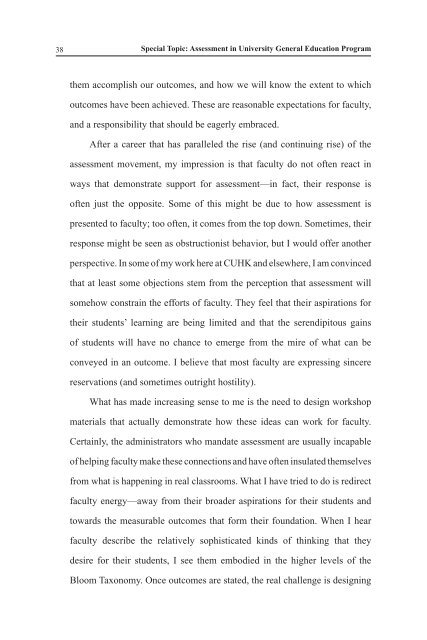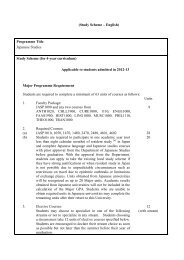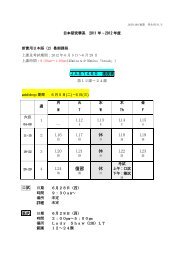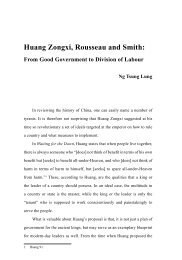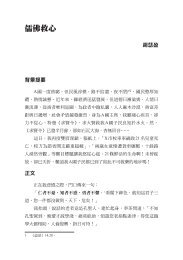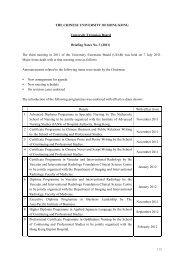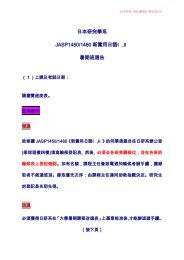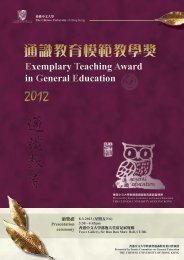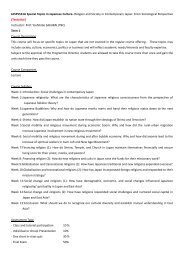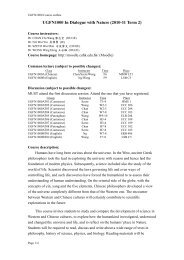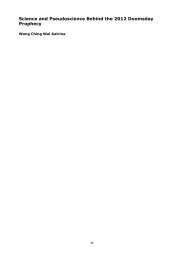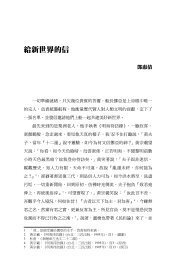ä¸è¼å ¨æ¸ - The Chinese University of Hong Kong
ä¸è¼å ¨æ¸ - The Chinese University of Hong Kong
ä¸è¼å ¨æ¸ - The Chinese University of Hong Kong
You also want an ePaper? Increase the reach of your titles
YUMPU automatically turns print PDFs into web optimized ePapers that Google loves.
38 Special Topic: Assessment in <strong>University</strong> General Education Programthem accomplish our outcomes, and how we will know the extent to whichoutcomes have been achieved. <strong>The</strong>se are reasonable expectations for faculty,and a responsibility that should be eagerly embraced.After a career that has paralleled the rise (and continuing rise) <strong>of</strong> theassessment movement, my impression is that faculty do not <strong>of</strong>ten react inways that demonstrate support for assessment—in fact, their response is<strong>of</strong>ten just the opposite. Some <strong>of</strong> this might be due to how assessment ispresented to faculty; too <strong>of</strong>ten, it comes from the top down. Sometimes, theirresponse might be seen as obstructionist behavior, but I would <strong>of</strong>fer anotherperspective. In some <strong>of</strong> my work here at CUHK and elsewhere, I am convincedthat at least some objections stem from the perception that assessment willsomehow constrain the efforts <strong>of</strong> faculty. <strong>The</strong>y feel that their aspirations fortheir students’ learning are being limited and that the serendipitous gains<strong>of</strong> students will have no chance to emerge from the mire <strong>of</strong> what can beconveyed in an outcome. I believe that most faculty are expressing sincerereservations (and sometimes outright hostility).What has made increasing sense to me is the need to design workshopmaterials that actually demonstrate how these ideas can work for faculty.Certainly, the administrators who mandate assessment are usually incapable<strong>of</strong> helping faculty make these connections and have <strong>of</strong>ten insulated themselvesfrom what is happening in real classrooms. What I have tried to do is redirectfaculty energy—away from their broader aspirations for their students andtowards the measurable outcomes that form their foundation. When I hearfaculty describe the relatively sophisticated kinds <strong>of</strong> thinking that theydesire for their students, I see them embodied in the higher levels <strong>of</strong> theBloom Taxonomy. Once outcomes are stated, the real challenge is designing


